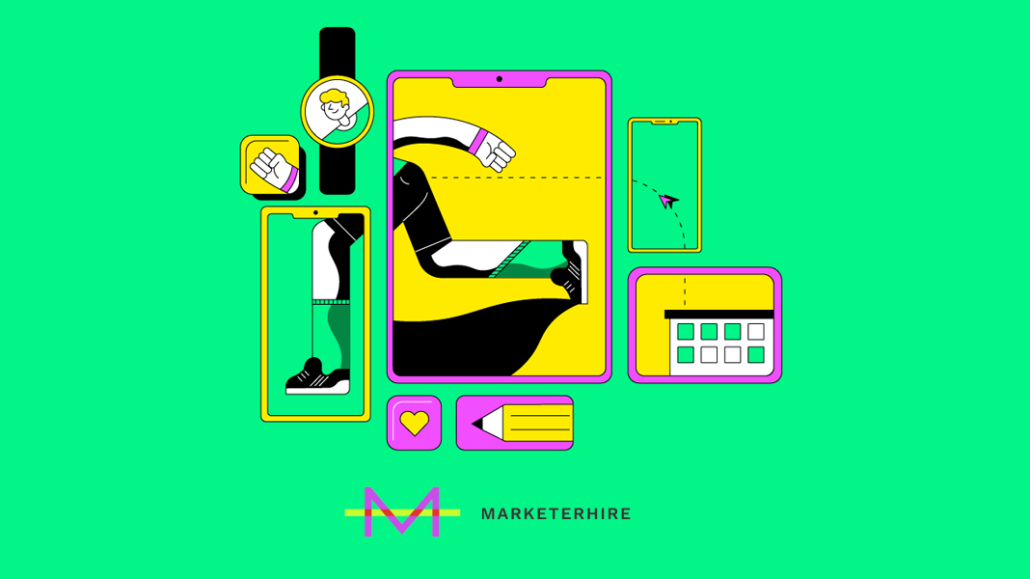More e-commerce brands are ditching agencies for freelancers — the KPIs say it’s working

Unrestrained by the brick-and-mortar walls of traditional retail, e-commerce brands move quickly and decisively with their advertising efforts — which means they need a marketing team that can keep up with the pace.
While large, established ad agencies can provide prestige and ensure experienced talent, oftentimes, for these fast-moving direct-to-consumer brands, working one-on-one with freelance talent guarantees closer and more immediate attention.
“Big agencies being the default for e-commerce startups really has stopped making sense for quite some time,” explains Chris Toy, CEO of freelance talent agency MarketerHire. “It’s very, very expensive,” and some companies, especially early stage e-commerce brands, can find themselves struggling for attention or creative freedom. “You feel like you don’t really have a lot of room to work,” Toy says.
To combat these challenges, many e-commerce brands have turned to in-housing to find a closer fit. However, this can be an arduous move, considering the three-to-six month period to find a new full-time hire — and the certainty that comes with making sure they’re the right pick. For Toy, freelancers represent an affordable middle ground between big agencies and in-housing: “You don’t feel like you’re just being sold a client experience.”
For e-commerce brand The Chivery — a retail division of Chive Media Group that sells apparel, drinkware and other merchandise — the choice to utilize freelance marketing talent was an easy one. “We recognized that, as a company, we’re only going to be good at certain things, and not others,” says Eric Spielman, Chief Strategy Officer at Chive Media Group and Atmosphere.
Ad position: web_incontent_pos1
After evaluating their respective strengths and weaknesses, Spielman knew his team needed to outsource certain elements of their customer acquisition. However, as a privately owned independent company that had never before raised money, Spielman was “a little more cognizant of costs.”
“There’s not a lot of appetite for an agency model where you’ve got to go through layers of account management and there are big planning cycles,” he explains. “We just like to go, go, go. And we know every aspect of our business inside and out. So we want to be in touch with the people who were turning the knobs and spending our dollars.”
Spielman was able to identify the areas in his company that were lacking in support: email, Facebook, SEO and pay-per-click spend. By focusing on these three key areas and bolstering them with freelance talent, The Chivery was able to increase productivity at pace.
Ad position: web_incontent_pos2
“If you’re in a digital business, things are happening in real time,” says Spielman. “Going through middle layers of account managers or product managers is just wasting valuable time. Especially with things like e-commerce where you may have a few hours to jump on a trend and scale a campaign.”
And working with individual talent directly streamlines more than just workflow. While agencies tend to rely on retainer-based business models, resulting in large fees for a sometimes indeterminate amount of work, freelancers tend to stick to an hourly model or they charge a flat rate per project, resulting in greater transparency in the relationship between cost and time.
“With an agency, you’re paying a retainer and you may or may not get your money’s worth,” says Spielman.
As a result of their freelance-forward strategy, The Chivery achieved their highest level of year-over-year growth rates for the past several years, along with the best results they’d ever had in terms of return on ad spend regarding Facebook and Google.
Briefcase and bag brand Stuart & Lau similarly found themselves in need of the personalization and intimacy that comes from working with a dedicated team of experts. By bringing on a team of freelancers to manage email and newsletter activities, as well as paid advertising on social and Google, the company drove a significant increase in monthly revenue, along with doubling their return on ad spend.
Of course, working with freelancers isn’t without its challenges. “People tend to not be in your office,” explains Spielman. “So you’ve got the similar challenge to having a remote employee, but it’s exacerbated by the fact that you may only have them 10 to 20 hours a week.”
But it’s an obstacle that Spielman says can be easily overcome with proper communication, namely through chat tools like Slack or weekly check-in calls. “For us, the pros far outweigh the cons,” he says. “We’d rather have 10 hours a week from someone who is an expert rather than 50 hours a week from someone who isn’t.”
More from Digiday
Sliders test article
Agencies hope connected TV and digital out-of-home will play a bigger role in upcoming elections and politics — especially for smaller media agencies that are handling many of the less visible races in the crowded political space. For a number of media agencies looking to place their political ad dollars down in this major election […]

How CTV and DOOH are growing this political season for smaller agencies
Connected TV and digital out-of-home are playing a bigger role in upcoming elections and politics – especially for smaller agencies looking to place clients’ dollars.

CMO Strategies: Advertisers identify the top attributes on ad-supported streaming platforms
This is the third installment in Digiday’s multi-part series covering the top ad-supported streaming services and part of Digiday’s CMO Strategies series. In this report, we examine which ad attributes matter the most to marketers on streaming platforms.
Ad position: web_bfu